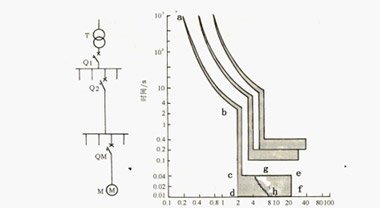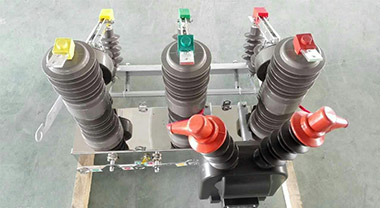Main mechanical parameters of vacuum circuit breaker
The main mechanical characteristic parameters of the high-voltage vacuum circuit breaker are based on a reasonable analysis of the characteristic curve to clarify the objectivity and accuracy of the system’s operating parameters of the circuit breaker in principle. The calibration methods for several important parameters are as follows.
(1) Opening distance: The rated voltage and withstand voltage of the vacuum circuit breaker directly determine the contact opening distance. If the rated voltage is low, the contact opening distance is generally small. But it should not be too small, otherwise the breaking capacity and withstand voltage level will be affected. It should not be too large, otherwise the life of the bellows of the interrupter will be shortened. When designing, choose a small distance to meet the operating requirements. Generally, when the rated voltage is 10kV, the opening distance is usually 8-12mm. At 35kV, the opening distance is usually 30-40mm.
(2) Contact pressure: When there is no external force, the movable contact will produce a closing force on the inner cavity to close the static contact under the action of atmospheric pressure, which is called self-closing force, and its magnitude depends on the port of the bellows diameter. When the arc extinguishing chamber is in working condition, the self-closing force cannot guarantee good contact between the moving and static contacts, and an external pressure must be applied. The sum of this applied pressure and self-closing force is called the contact pressure of the contact. The functions of contact pressure are: to ensure good contact between the dynamic and static contacts; to meet the requirements of dynamic stability in the rated short-circuit state; to inhibit the closing bounce; to provide an acceleration force for the opening.
(3) Contact stroke: The contact stroke is the compression distance of the contact spring, and the end of the contact pressure spring continues to move to the end. The contact stroke has two functions. One is to provide contact pressure to the contact spring and the contact head; the other is to have a certain contact pressure under running wear. Generally, the contact stroke can be about 20% to 30% of the opening distance. If the rated voltage of the vacuum circuit breaker is 10kV, the contact stroke is about 3 to 4mm.
(4) Closing speed and opening speed: The average closing speed mainly affects the electrical wear of the contacts. If the closing speed is too low and the arc exists for too long, it will increase the electrical wear on the contact surface; if the closing speed is too high, contact and rebound may occur, resulting in closing bounce. The average closing speed of the circuit breaker usually takes a value between 0.6 and 1.0 m/s.
Generally speaking, the opening speed of the circuit breaker is as fast as possible. In this way, the fault circuit can be disconnected a few milliseconds in advance. If the rebound is too large, the excessive vibration can easily cause re-ignition. If the opening speed is too slow, the first opening phase will continue to the next phase, and the arcing time will be lengthened, increasing the difficulty of opening. The speed mainly depends on the energy storage of the moving contact spring and the opening spring when closing. The 10kV vacuum circuit breaker produced by our company has an average opening speed in the range of 1.2 to 1.6m/s.




